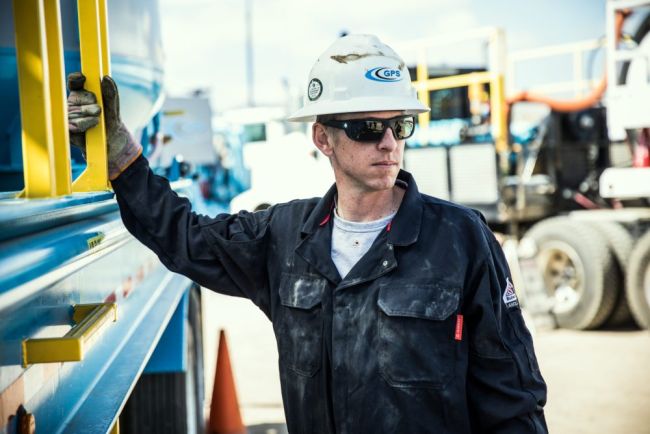
Optimizing Arc Flash Protection: The Crucial Role of Layered Clothing
A layered approach that includes FR/AR undergarments can enhance worker safety, comfort and compliance.
Given the arc flash hazards and other risks that exist in electric utility work environments, an employer’s commitment to employee safety must never falter. It is essential for workers to wear personal protective equipment in these environments; in particular, prior to exposure, workers must don flame-resistant (FR) or arc-rated (AR) garments that meet or exceed assessed incident energy levels.
And while single-layer FR/AR garments are common in the utility industry, it’s important to recognize that they can fall short in areas such as weight, heat retention and comfort. Additionally, although the standard arc rating of 8 cal/cm² is frequently deemed sufficient, employers should be aware that it could leave workers vulnerable in certain hazardous scenarios.
With all that said, don’t forget that there’s an effective FR/AR clothing strategy that is sometimes overlooked: a layered approach to user protection that includes FR/AR undergarments, a critical component of the clothing system. Employers that use this approach can significantly enhance the safety, comfort and compliance of their workforce in hazardous environments.
The Importance of Protective Undergarments
Undergarments receive little attention in many FR/AR clothing programs despite their essential role in worker protection. Requiring workers to wear undergarments comprised of 100% cotton or natural fibers is a good step forward – but it still leaves room for error. A more robust solution for employers is to provide employees with FR/AR base layers, which offer greater protection.
FR/AR base layers act as a safety net in the event of an arc flash, preventing burns and avoiding combustion even when outer shirts are untucked. The use of this approach aligns with OSHA and NFPA guidelines, which emphasize the necessity of avoiding meltable fibers.
Three Key Benefits
A layered FR/AR clothing system offers a versatile, effective solution to the shortcomings of single-layer garments. By combining lightweight FR/AR garments, employers can achieve desired arc ratings without compromising employee comfort or mobility.
Specifically, layering provides these three key benefits:
- Enhanced protection. The individual arc ratings of each layer of clothing, when added together, offer a better defense against break-open and ignition scenarios than a single layer.
- Moisture management. Layered FR/AR garments improve sweat evaporation and overall comfort for the user, especially in extreme conditions.
- Temperature regulation. Layering allows workers to adapt their clothing to changing weather conditions so that they can stay warm in cold temperatures and cooler in the heat.
Readers should take note that industry standards – including OSHA regulations and NFPA 70E – stress the employer’s responsibility to provide appropriate FR/AR clothing to workers who face exposure hazards. ASTM F1506 recognizes layering as an effective method for optimizing arc-flash protection, underscoring the importance of proper garment selection.
Layered System Components
A layered FR/AR clothing system that is well-designed typically includes two types of garments: base layers and outer layers. Base layers are those FR/AR undergarments that provide an initial layer of protection while also helping to ensure comfort. Outer layers – such as FR/AR shirts, trousers and coveralls – act as the primary defense against arc flash incidents.
Employers should be mindful that workers must wear appropriately rated FR/AR high-visibility garments in low-light environments where arc flash hazards are present. However, additional arc ratings from high-visibility vests should not be factored into the total arc rating of the clothing system.
Training and Best Practices
Good training is a cornerstone of any successful PPE program. OSHA requires employers to ensure that their workers understand when PPE is necessary, how to wear and use it correctly, and what its limitations are. Specifically, employers must ensure their workers are trained to:
- Wear all FR/AR layers properly, which includes zipping jackets and tucking in shirts.
- Always wear appropriately rated FR/AR outer layers where arc flash hazards exist.
- Avoid wearing non-FR/AR outerwear over FR/AR garments.
Employers and employees should be aware that regular care and maintenance of FR/AR garments is vital to preserving their protective properties.
Conclusion
Because workers in the electric utility industry face the persistent threat of arc flashes, employers must consider investing in a layered FR/AR clothing system for their crews that prioritizes the use of FR/AR undergarments. This is more than just a strategy; in some settings, it’s a necessity. When a layered clothing system is effectively implemented, workers gain enhanced protection to safely and comfortably perform their tasks – even in the most challenging environments.
About the Author: Derek Sang, CSHEP, QSSP, is the senior technical training manager for Bulwark Protection. He has served the FR/AR clothing industry for more than 25 years. Reach him at derek.sang@bulwark.com.

